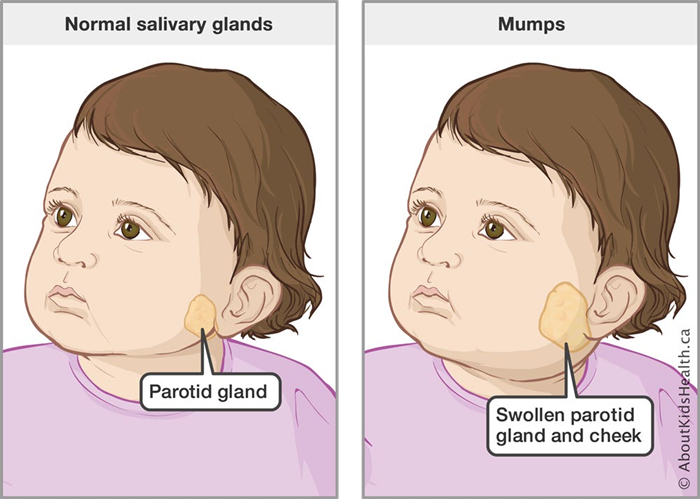A parent calls a clinic and reports to a nurse that his 2-month-old infant is hungry more than usual but is projectile vomiting immediately after eating. Which of the following responses should the nurse make?
"Bring your baby into the clinic today."
"Give your infant an oral rehydration solution."
"Burp your baby more frequently during feedings."
"Try switching to a different formula."
The Correct Answer is A
Choice A: This response is appropriate, as it indicates urgency and concern for the infant's condition. Projectile vomiting immediately after eating can be a sign of pyloric stenosis, which is a condition that causes the narrowing of the pylorus, which is the opening between the stomach and the small intestine. Pyloric stenosis can prevent food from passing through and cause dehydration, electrolyte imbalance, or weight loss. The infant needs to be evaluated by a provider as soon as possible and may need surgery to correct the problem.
Choice B: This response is not appropriate, as it does not address the underlying cause of the infant's condition. Oral rehydration solution can help replace fluids and electrolytes lost through vomiting, but it does not treat pyloric stenosis or prevent further vomiting. Oral rehydration solution may also be vomited out by the infant if given too soon or too much.
Choice C: This response is not appropriate, as it does not address the underlying cause of the infant's condition. Burping the baby more frequently during feedings can help release air bubbles and prevent gas or colic, but it does not treat pyloric stenosis or prevent further vomiting. Burping may also trigger vomiting by increasing pressure on the stomach.
Choice D: This response is not appropriate, as it does not address the underlying cause of the infant's condition. Switching to a different formula can help if the infant has an allergy or intolerance to certain ingredients in their current formula, but it does not treat pyloric stenosis or prevent further vomiting. Switching formulas may also cause diarrhea or constipation by changing the infant's bowel flora.
Nursing Test Bank
Naxlex Comprehensive Predictor Exams
Related Questions
Correct Answer is A
Explanation
Choice A: This response is appropriate, as it indicates urgency and concern for the infant's condition. Projectile vomiting immediately after eating can be a sign of pyloric stenosis, which is a condition that causes the narrowing of the pylorus, which is the opening between the stomach and the small intestine. Pyloric stenosis can prevent food from passing through and cause dehydration, electrolyte imbalance, or weight loss. The infant needs to be evaluated by a provider as soon as possible and may need surgery to correct the problem.
Choice B: This response is not appropriate, as it does not address the underlying cause of the infant's condition. Oral rehydration solution can help replace fluids and electrolytes lost through vomiting, but it does not treat pyloric stenosis or prevent further vomiting. Oral rehydration solution may also be vomited out by the infant if given too soon or too much.
Choice C: This response is not appropriate, as it does not address the underlying cause of the infant's condition. Burping the baby more frequently during feedings can help release air bubbles and prevent gas or colic, but it does not treat pyloric stenosis or prevent further vomiting. Burping may also trigger vomiting by increasing pressure on the stomach.
Choice D: This response is not appropriate, as it does not address the underlying cause of the infant's condition. Switching to a different formula can help if the infant has an allergy or intolerance to certain ingredients in their current formula, but it does not treat pyloric stenosis or prevent further vomiting. Switching formulas may also cause diarrhea or constipation by changing the infant's bowel flora.
Correct Answer is D
Explanation
Choice A: Contact precautions are not necessary for a child who has mumps, as mumps is not transmitted by direct or indirect contact with the infected person or their environment. Contact precautions are used for infections that are spread by contact with skin, wounds, body fluids, or contaminated surfaces.
Choice B: Standard precautions are always used for any patient care, regardless of their diagnosis or infection status. Standard precautions include hand hygiene, use of personal protective equipment (PPE), safe injection practices, and proper disposal of waste and sharps. However, standard precautions alone are not sufficient for a child who has mumps, as mumps are transmitted by respiratory droplets.
Choice C: Airborne precautions are not necessary for a child who has mumps, as mumps are not transmitted by small particles that remain suspended in the air and can be inhaled by others. Airborne precautions are used for infections that are spread by airborne transmission, such as tuberculosis, measles, or chickenpox.
Choice D: Droplet precautions are required for a child who has mumps, as mumps are transmitted by large respiratory droplets that are expelled when the infected person coughs, sneezes, or talks. Droplet precautions include wearing a surgical mask when within 3 feet of the patient, placing the patient in a private room or cohorts with other patients with the same infection, and limiting visitors and staff who are susceptible to the infection.

Whether you are a student looking to ace your exams or a practicing nurse seeking to enhance your expertise , our nursing education contents will empower you with the confidence and competence to make a difference in the lives of patients and become a respected leader in the healthcare field.
Visit Naxlex, invest in your future and unlock endless possibilities with our unparalleled nursing education contents today
Report Wrong Answer on the Current Question
Do you disagree with the answer? If yes, what is your expected answer? Explain.
Kindly be descriptive with the issue you are facing.
